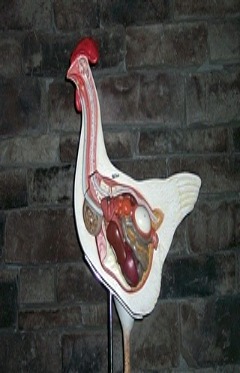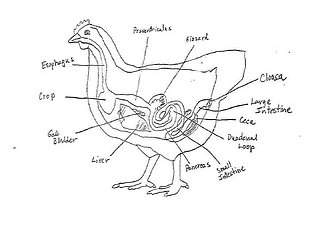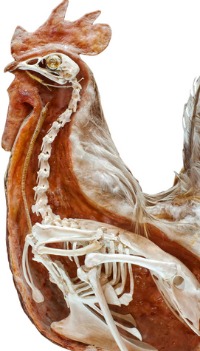Chicken Anatomy
Part of raising chickens is understanding chicken anatomy. It can help you determine what may be wrong if your chickens become sick. Understanding what part of the body your chickens are having problems with can help you determine what disease the bird might have. Also, if your flock keeps getting a disease that affects the same part of their body you may be able to to solve the disease problem by changing some of your chicken management practices.
Common Facts on Chicken Anatomy:

Maximum Life Span:
Maximum Production Life:
Body Temperature:
Respiratory Rate:
Heart Rate:
Immune System:
For humans and birds alike, our first method of defense against disease is the largest organ in our body, which is our skin. The majority of organisms that enter the body can only enter through the skin or the mucus membranes lining the openings to the outside of the body.
Once an organism gains access to the body the next line of defense is the lymphatic system. All body tissues are lubricated with a fluid known as "lymph." It derives from the bloodstream and accumulates in the spaces between tissue cells. It contains specialized white blood cells that hunt out and destroy invading microbes.
In birds, immunity is controlled by an organ behind the cloaca called the cloacal bursa. Some viral diseases can damage the cloacal bursa and permanently harm the birds immune system. One of the more popular ones is known as "Marek's Disease.

Digestive System:
Knowing chicken anatomy will help you determine how your chickens break down their food and what problems may occur along the way. When food enters the beak of a chicken, it immediately begins being broken down by saliva (chickens don't have teeth).
The next place that the food enters, after the tongue pushes the food down the throat, is the esophagus. From the esophagus the food then enters the chicken's crop.

The crop is a pocket at the base of neck that holds food to be digested. Chickens can sometimes have problems with their crops, where food will get blocked.
This is commonly known as "Crop Impaction." From the crop, food moves to the proventriculus or true stomach. Enzymes break the food down further here.
It then passes on to the gizzard, or the mechanical stomach. The gizzard is built with thick strong muscles that do most of the breaking down of the food. Birds can have problems with their gizzards if they happen to eat small sharp objects such as staples or shards of glass.
From the gizzard the food then enters the small intestine for absorption. The upper portion of the small intestine, known as the duodenum forms a loop. Enclosed in the loop is the pancreas, which secretes enzymes to aid in digestion. After this loop you have the liver that secretes bile to aid in digestion.
Coming off of the small and large intestine are two blind pouches called the ceca that have no known function. The last portion of the intestine is known as the large intestine or rectum. It is relatively short.
These are just two of the systems that your chickens may have problems in.
Other systems include:

Custom Search



New! Comments
Have your say about what you just read! Leave me a comment in the box below.